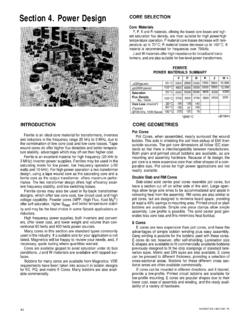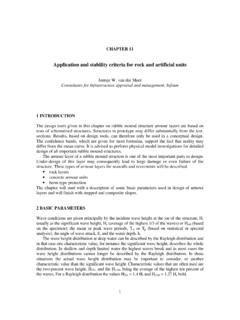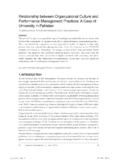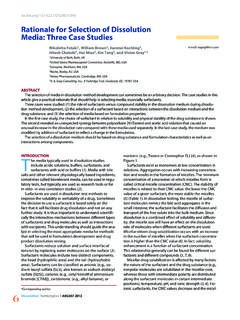Transcription of Effect of a 4‐week elastic resistance band training ...
1 DR. THILO PFAU (Orcid ID : 0000-0002-0702-4289). Accepted Article Article type : General Article Effect of a 4-week elastic resistance band training regimen on back kinematics in horses trotting in-hand and on the lunge. T. Pfau1,2,*, V. Simons1, N. Rombach3, N. Stubbs4 and R. Weller1,2. 1. Department of Clinical Science and Services, Royal Veterinary College, London, UK;. 2. Structure and Motion Lab, Royal Veterinary College, London, UK;. 3. Equinology Inc., California, USA;. 4. Department of Equine Sports Medicine, Tierklinik L sche, Germany, Samorin, Napoli Slovak Equestrian Club, lovak.
2 *Corresponding author email: Keywords: horse;. Summary Reasons for performing study: training and rehabilitation techniques aiming at improving core muscle strength may result in increased dynamic stability of the equine vertebral column. A system of elastic resistance bands is suggested to provide proprioceptive feedback during motion to encourage recruitment of core abdominal and hindquarter musculature for improved dynamic stability. This article has been accepted for publication and undergone full peer review but has not been through the copyediting, typesetting, pagination and proofreading process, which may lead to differences between this version and the Version of Record.
3 Please cite this article as doi: This article is protected by copyright. All rights reserved. Objectives: To quantify the effects of a specific resistance band system on back kinematics during trot in-hand and during lungeing at beginning and end of a 4-week exercise programme. Accepted Article Study design: Quantitative analysis of back movement before/after a 4-week exercise programme. Methods: Inertial sensor data were collected from seven horses at week 1 and 4 of an exercise protocol with elastic resistance bands. Translational (dorsoventral, mediolateral) and rotational (roll, pitch) range of motion of six landmarks from poll to coccygeal region were quantified during trot in-hand (hard surface) and during lungeing (soft surface, both reins).
4 With/without elastic exercise bands. A mixed model (p< ) evaluated the effects of exercise bands, time (week) and movement direction (straight, left, right). Results: The bands reduced roll, pitch and mediolateral displacement in the thoracolumbar region (all p< ). At week 4, independent of band usage, rotational movement (withers, thoracic) was reduced while dorsoventral movement (thoracic, coccygeal) increased. Increased back movement was measured in 80% of back movement parameters during lungeing. Main limitations: Comparing each horse without and with bands without a control group does not distinguish whether the differences measured between week 1 and 4 are related to use of the bands, or only to the exercise regimen.
5 Conclusion: Results suggest that the elastic resistance bands reduce mediolateral and rotational movement of the thoracolumbar region (increase dynamic stability) in trot. Further studies should investigate the underlying mechanism with reference to core abdominal and hindquarter muscle recruitment and study the long-term effects. This article is protected by copyright. All rights reserved. Introduction The vertebral column and its associated musculature is fundamental during locomotor Accepted Article activity to facilitate force transmission from the pelvic limbs through to the thoracic limbs, neck and head [1].
6 Due to this interdependency, altered gait patterns due to lameness or other pain stimuli ( poor saddle fit [2]), can result in asymmetrical loading of the vertebral column. This can cause altered muscle activation patterns in both the locomotor and postural trunk muscles, which can then cause functional changes such as muscle spasm [3]. In order to rehabilitate affected muscle groups after veterinary intervention, the use of physical therapy techniques may be advocated. The evidence base of physical therapy for rehabilitation and performance development in horses and its relationship to clinical reasoning has been studied [4].
7 Protocols are specific to individual cases, but generally involve initial physical therapy/manipulation techniques, followed by a ground work programme which can incorporate the use of proprioceptive aids [5]. Recent work has shown an increased lumbosacral angle and dorsoventral displacement of the horse's back at trot on the lunge using the PessoaTM training aid [6]. The Equiband ,a system (Fig 1) uses resistance band training to promote muscular rehabilitation and development in horses. The hindquarter band is intended to increase proprioception through stimulating a neuromuscular response, resulting in greater pelvic limb muscle activation [7].
8 The abdominal band fits around the middle third of the abdomen, with the intention of increasing recruitment of abdominal musculature during locomotion. Engagement of abdominal and hindquarter musculature is thought to encourage core postural muscle development and to improve dynamic stability of the back and pelvis, essential for ridden performance [6]. In people with poor muscular core strength, resistance band training has been shown to increase muscle activity of the pelvis and lower back [8 12]. In the presented study we refer to increased dynamic stability' when a reduction in range of motion (either translational or rotational) is measured.
9 This article is protected by copyright. All rights reserved. Spinal kinematics can be captured with optical motion capture systems, enabling accurate measurement of the small movements of the horse's back [13]. For in-field measurement of back movement, inertial measurement units (IMUs) are portable, validated [14], can identify Accepted Article breed-specific back movement patterns [15] and can be positioned under the saddle [16]. In trot, the range of movement varies between regions of the vertebral column [17,18]. Due to the vertically orientated articular surfaces and significant transverse vertebral processes in the lumbar region, there is minimal lateral bending or axial rotation in this region [19,20].
10 In comparison, flexion-extension and mediolateral displacement is greatest in the lumbosacral region [17,18] and may be related to the size and attachment of key muscle groups in this area. Pitch (or flexion-extension) movement is also maximal in this region due to the large joint space [19]. Dorsoventral displacement is greatest in the caudal thoracic region and range of motion is positively correlated with the distance from the body centre of mass (at the level of T13) [21,22]. We aimed to assess whether the use of a proprioceptive aid provided by an elastic resistance band resulted in differences in back kinematics in trot.







